It looks like you're using an Ad Blocker.
Please white-list or disable AboveTopSecret.com in your ad-blocking tool.
Thank you.
Some features of ATS will be disabled while you continue to use an ad-blocker.
share:
a reply to: GaryN
Would you settle for pictures of stars taken from lunar orbit by an ordinary Nikon F2, just like the one I use?
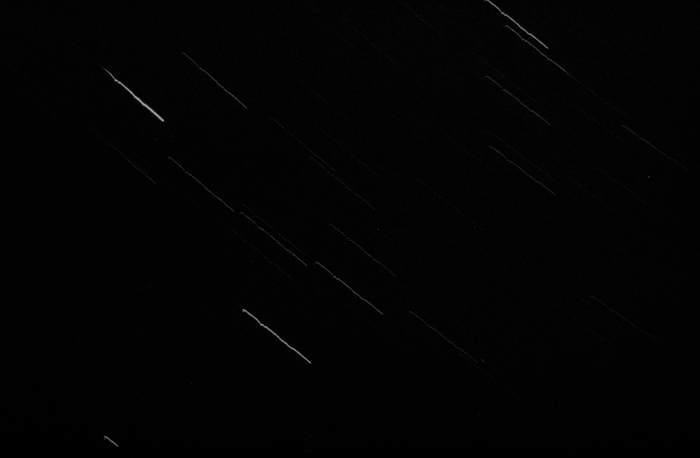
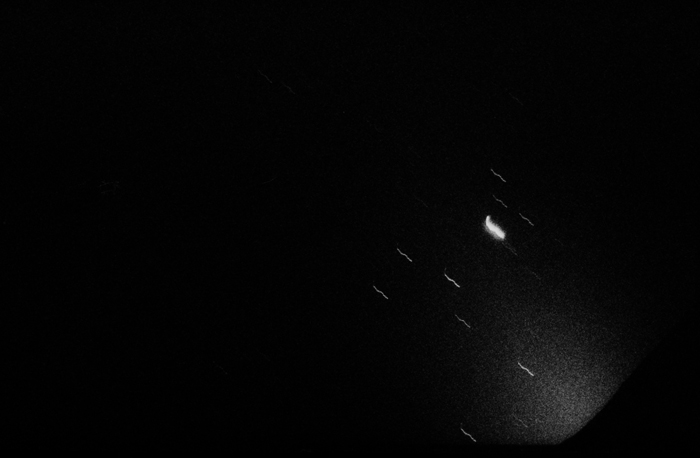
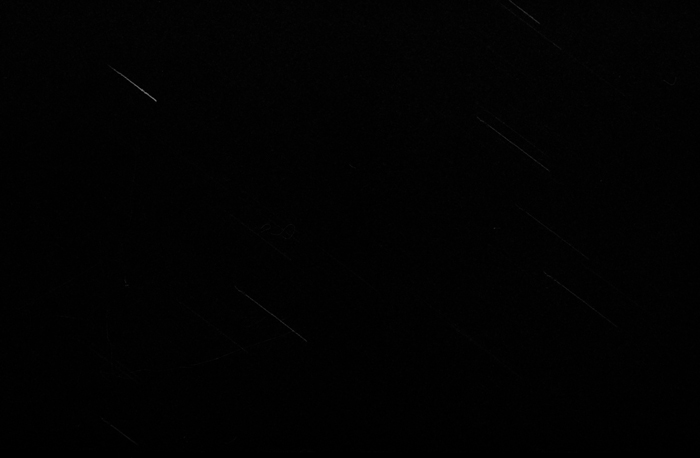
There are forty two more here. Notice that the long exposure necessary causes the stars to appear as trails. The actual intended target of the photographs was the even dimmer gegenschein, or zodiacal light. It is caused by dust particles in the ecliptic, which pose a potential hazard for interplanetary craft, hence the interest.
I've made my mind up, Armstrong was correct when he said the sky from the Lunar surface and cislunar space is black. When I see a verifiable image of stars from the Lunar surface using a regular camera then I'll believe they are visible. Won't ever happen, even from the far side.
Would you settle for pictures of stars taken from lunar orbit by an ordinary Nikon F2, just like the one I use?



There are forty two more here. Notice that the long exposure necessary causes the stars to appear as trails. The actual intended target of the photographs was the even dimmer gegenschein, or zodiacal light. It is caused by dust particles in the ecliptic, which pose a potential hazard for interplanetary craft, hence the interest.
edit on
12-2-2016 by DJW001 because: (no reason given)
a reply to: DJW001
Not quite as impressive as the ones taken from a 747 are they? How long do you think the exposure was for the colourful version?
But no stars show up? And the second image you posted there explains why stars were visible at times, the Sun was behind the limb of the Moon and the stars are being viewed through the the Suns own dust disk and the lunar atmospheric dust and making them visible. Very similar is noted from the ISS, when the Sun is just behind Earth, the stars are more visible, or require shorter exposure times.
Would you settle for pictures of stars taken from lunar orbit by an ordinary Nikon F2, just like the one I use?
Not quite as impressive as the ones taken from a 747 are they? How long do you think the exposure was for the colourful version?
The actual intended target of the photographs was the even dimmer gegenschein, or zodiacal light.
But no stars show up? And the second image you posted there explains why stars were visible at times, the Sun was behind the limb of the Moon and the stars are being viewed through the the Suns own dust disk and the lunar atmospheric dust and making them visible. Very similar is noted from the ISS, when the Sun is just behind Earth, the stars are more visible, or require shorter exposure times.
a reply to: GaryN
The exposure was 20 seconds, using a 55mm f/1.2 lens on the F2 and ASA 6000 film. It used a red filter that cut the amount of exposed light at least in half, probably more likely to 1/4 or 1/8th.
ntrs.nasa.gov...
The exposure was 20 seconds, using a 55mm f/1.2 lens on the F2 and ASA 6000 film. It used a red filter that cut the amount of exposed light at least in half, probably more likely to 1/4 or 1/8th.
ntrs.nasa.gov...
originally posted by: nataylor
a reply to: GaryN
The exposure was 20 seconds, using a 55mm f/1.2 lens on the F2 and ASA 6000 film. It used a red filter that cut the amount of exposed light at least in half, probably more likely to 1/4 or 1/8th.
ntrs.nasa.gov...
Ooh, that is one interesting document!
Something caught my eye on the page 12 - "The galactic cluster photography on Apollo 16". They were doing deep space photography! Even though the experiment didn't succeed due to strong image smear over the 5-minute exposures, the point is that they were photographing deep space objects like galaxies using visible light photographic film, and capturing some light.
ntrs.nasa.gov...
More info (emphasis mine):
The 35-mm Nikon camera, with a focal length of 55 mm and a relative aperture of f/l. 2, was designed for through-the-lens viewing and metering. A very high-speed black and white (VHBW) film, 2485, was used for the Nikon photography. The Command Module pilot operated the camera manually when targets of interest were in view. The mission objectives for the Nikon camera included dim light photography of diffuse galactic light of celestial regions, the zodiacal light, and the north galactic pole. Analysis of the extent, locations, configurations, and light levels of astronomical sources can provide some information on the location of interplanetary and interstellar concentrations of matter. The Nikon camera also exposed photographs of the gegenschein from lunar orbit to attempt to confirm the possible accumulation of matter at the Moulton point and to help assess the contribution to the gegenschein of light that may be reflected from the region of the Moulton point.
pdsimage2.wr.usgs.gov...
Talk about not seeing light in space...
As this 1970 news article explains, these photography experiment would benefit from being free from the interfering influence of earth's atmosphere.
edit on 13-2-2016 by
wildespace because: (no reason given)
a reply to: GaryN
You should change your name to Gary move the goalposts N, you are never wrong and always find some new piece of BS to back your ideas.
Way back at the start of my encounters of your rubbish you claimed that an Astronaut could not see stars that sensors in Hubble or any NASA probe were secret high tech THEY ARE NOT and that stars or planets cannot be photographed in space.
The Dawn Mission
Dawn image of Vesta with STARS
or how about this
Star field in Cephus
A star field in the constellation Cepheus is a composite of two 600-second exposures by the Framing Camera acquired during tests on December 3, 2007
The Framing Camera (FC) is the German contribution to the Dawn mission. The camera will map 4 Vesta and 1 Ceres through a clear filter and 7 band-pass filters covering the wavelengths from the visible to the near-IR.
You should change your name to Gary move the goalposts N, you are never wrong and always find some new piece of BS to back your ideas.
Way back at the start of my encounters of your rubbish you claimed that an Astronaut could not see stars that sensors in Hubble or any NASA probe were secret high tech THEY ARE NOT and that stars or planets cannot be photographed in space.
The Dawn Mission
Dawn image of Vesta with STARS
or how about this
Star field in Cephus
A star field in the constellation Cepheus is a composite of two 600-second exposures by the Framing Camera acquired during tests on December 3, 2007
The Framing Camera (FC) is the German contribution to the Dawn mission. The camera will map 4 Vesta and 1 Ceres through a clear filter and 7 band-pass filters covering the wavelengths from the visible to the near-IR.
a reply to: wildespace
Certainly is, and confirms that images were acquired while in Earth or Lunar orbit, which means the effects of the atmospheres can not be ruled out. Images proven to be from Cislunar space are needed for comparison.
Here is an interesting page about Earths atmosphere that I found while looking for Total Solar Irradiance figures at visible wavelengths, from the Lunar or Martian surface, or from orbit of same, or from cislunar space, or perhaps a mission to a comet, or Ceres, or anywhere other than from within earths atmosphere. There are none, so all the figures for light levels and albedos of planets and moons and comets are just calculations, based on the TSI from within Earths atmosphere and using accepted models and formulas. TSI at even the Lunar surface has never been measured directly.
Inventions and Deceptions – Total Solar Irradiance
malagabay.wordpress.com...
@wmd_2008
Yes, near IR, so how do I know the image is not all in near-IR?
Some nice images here, but at this time Dawn was still within Earths atmosphere.
Dawn's Framing Camera Views Carina
This view in the southern constellation Carina was acquired on December 13, 2007 as part of the characterization tests of the Framing Camera. The cluster of stars in the center is NGC 3532, and the nebula in the lower right is the Eta Carina Nebula.
www.jpl.nasa.gov...
Star Field in the Constellation Cepheus
A star field in the constellation Cepheus is a composite of two 600-second exposures by the Framing Camera acquired during tests on December 3, 2007.
www.jpl.nasa.gov...
Two 600 second exposures, and you think your eyes would have seen anything at all?
I think it obvious to say that the very best images of the heavens are taken from the surface of the Earth, simply because it has a denser and more diverse atmosphere. No astrophotography from the Lunar surface as the atmosphere is too thin, and nothing at all from Cislunar space because there is no atmosphere. Makes sense to me, but then as you know, I'm not from this planet.
Ooh, that is one interesting document!
Certainly is, and confirms that images were acquired while in Earth or Lunar orbit, which means the effects of the atmospheres can not be ruled out. Images proven to be from Cislunar space are needed for comparison.
Here is an interesting page about Earths atmosphere that I found while looking for Total Solar Irradiance figures at visible wavelengths, from the Lunar or Martian surface, or from orbit of same, or from cislunar space, or perhaps a mission to a comet, or Ceres, or anywhere other than from within earths atmosphere. There are none, so all the figures for light levels and albedos of planets and moons and comets are just calculations, based on the TSI from within Earths atmosphere and using accepted models and formulas. TSI at even the Lunar surface has never been measured directly.
Inventions and Deceptions – Total Solar Irradiance
malagabay.wordpress.com...
@wmd_2008
from the visible to the near-IR
Yes, near IR, so how do I know the image is not all in near-IR?
Some nice images here, but at this time Dawn was still within Earths atmosphere.
Dawn's Framing Camera Views Carina
This view in the southern constellation Carina was acquired on December 13, 2007 as part of the characterization tests of the Framing Camera. The cluster of stars in the center is NGC 3532, and the nebula in the lower right is the Eta Carina Nebula.
www.jpl.nasa.gov...
Star Field in the Constellation Cepheus
A star field in the constellation Cepheus is a composite of two 600-second exposures by the Framing Camera acquired during tests on December 3, 2007.
www.jpl.nasa.gov...
Two 600 second exposures, and you think your eyes would have seen anything at all?
I think it obvious to say that the very best images of the heavens are taken from the surface of the Earth, simply because it has a denser and more diverse atmosphere. No astrophotography from the Lunar surface as the atmosphere is too thin, and nothing at all from Cislunar space because there is no atmosphere. Makes sense to me, but then as you know, I'm not from this planet.
edit on 13-2-2016 by GaryN because: (no reason
given)
I think it obvious to say that the very best images of the heavens are taken from the surface of the Earth, simply because it has a denser and more diverse atmosphere. No astrophotography from the Lunar surface as the atmosphere is too thin, and nothing at all from Cislunar space because there is no atmosphere.
Actually it the opposite. But that means it is accepted that an atmosphere isn't required for star light to be 'created' or whatever this is about.
Wouldn't an observatory be placed at the lowest point on Earth instead of high up in mountainous areas if the first were true.
GaryN, is it your contention that visible light only becomes visible due to the light's interaction with molecules in the atmosphere?
If so, it seems the easiest experiment would be to put a camera/light meter and a light source inside a vacuum chamber. That's something simple enough you could build it at home.
If so, it seems the easiest experiment would be to put a camera/light meter and a light source inside a vacuum chamber. That's something simple enough you could build it at home.
originally posted by: nataylor
GaryN, is it your contention that visible light only becomes visible due to the light's interaction with molecules in the atmosphere?
If so, it seems the easiest experiment would be to put a camera/light meter and a light source inside a vacuum chamber. That's something simple enough you could build it at home.
Already DONE from my first post on this thread.
Astronaut in the vacuum chamber at NASA taken by another in the vacuum chamber no atmosphere
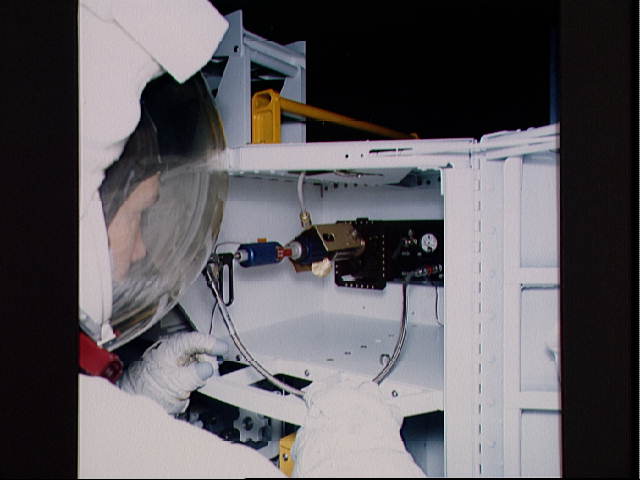
a reply to: GaryN
First of all there is NOTHING to say they are not from the visible light range and your comment about the 600 second exposures show YOU are not thinking about the exposure details or what the image shows,
First the optical system has an aperture of f7.9 not very fast also look at the number of stars in the image BUT LETS PUT THIS BS of yours to rest!!!!
Cassini images of stars
Cassini Star Image
First of all there is NOTHING to say they are not from the visible light range and your comment about the 600 second exposures show YOU are not thinking about the exposure details or what the image shows,
First the optical system has an aperture of f7.9 not very fast also look at the number of stars in the image BUT LETS PUT THIS BS of yours to rest!!!!
Cassini images of stars
Cassini Star Image
A long exposure time was required in order to image Tethys while it was in shadow, resulting in the background stars' point-like images being smeared into streaks. Additionally, the image was taken using a compression scheme that reduces the image file size on the spacecraft's data recorder, resulting in the moon's pixilated appearance.
The image was taken in visible light with the Cassini spacecraft wide-angle camera on Sept. 25, 2008.
originally posted by: eriktheawful
So....what? Every image we've seen from Hubble (which is above the atmosphere), is what? A fabrication?
No Silly!
It's photograph! Duh
originally posted by: roadgravel
I think it obvious to say that the very best images of the heavens are taken from the surface of the Earth, simply because it has a denser and more diverse atmosphere. No astrophotography from the Lunar surface as the atmosphere is too thin, and nothing at all from Cislunar space because there is no atmosphere.
Actually it the opposite. But that means it is accepted that an atmosphere isn't required for star light to be 'created' or whatever this is about.
Wouldn't an observatory be placed at the lowest point on Earth instead of high up in mountainous areas if the first were true.
Exactly, just one of the MANY facts that seems to be slipping GaryN by. Im not seeing any of the worlds leading astronomers kickstarting a campaign to build a telescope in Erta Ale
a reply to: wmd_2008
Yes, it should be telling you that I am bored with repeating answers to the same old questions from those who can not see the obvious flaws in all of what NASA tells us about what is visible out there. If our own Sun, a star, can not be seen from cislunar space, then obviously no other stars can be seen, and the fact that the only people who have been in cislunar space to tell us what the Sun looks like from there say nothing about the Sun at all, took no pictures of it at all. Find me any discussion of the Suns appearance from cislunar space and I'll join the discussion again
I just completed a study of SOHO, orbiting the L1 point, and I can tell you that our eyes can see none of what SOHO sees, and that SOHO can only see the Sun if it is aligned perfectly to the centre of the Sun. When its Sun sensors lost lock on the Sun, all images from SOHO ceased, and they had to perform a "Sun aquisition" routine to get the alignment back. And Sun sensors do not see light, read up on them.
Have a look for data on the solar spectrum from SOHO, something like the data from SOLSPEC on the ISS. You will find none, all you get is a composite TSI value, and that is measured by an instrument called an active cavity radiometer, which does not work anything like a camera. There is no visible light spectrum from the Sun at SOHOs location outside of Earths atmosphere, therefore it would not be visible to our eyes. That nobody here seems to understand any of this is not my fault, it is just further proof that the corporate controlled education system and big media really have succeeded in dumbing everyone down to the Idiocracy level. Talk about Eyes Wide Shut. Open them!!
GaryN's lack of response to this speaks volumes.
Yes, it should be telling you that I am bored with repeating answers to the same old questions from those who can not see the obvious flaws in all of what NASA tells us about what is visible out there. If our own Sun, a star, can not be seen from cislunar space, then obviously no other stars can be seen, and the fact that the only people who have been in cislunar space to tell us what the Sun looks like from there say nothing about the Sun at all, took no pictures of it at all. Find me any discussion of the Suns appearance from cislunar space and I'll join the discussion again
I just completed a study of SOHO, orbiting the L1 point, and I can tell you that our eyes can see none of what SOHO sees, and that SOHO can only see the Sun if it is aligned perfectly to the centre of the Sun. When its Sun sensors lost lock on the Sun, all images from SOHO ceased, and they had to perform a "Sun aquisition" routine to get the alignment back. And Sun sensors do not see light, read up on them.
Have a look for data on the solar spectrum from SOHO, something like the data from SOLSPEC on the ISS. You will find none, all you get is a composite TSI value, and that is measured by an instrument called an active cavity radiometer, which does not work anything like a camera. There is no visible light spectrum from the Sun at SOHOs location outside of Earths atmosphere, therefore it would not be visible to our eyes. That nobody here seems to understand any of this is not my fault, it is just further proof that the corporate controlled education system and big media really have succeeded in dumbing everyone down to the Idiocracy level. Talk about Eyes Wide Shut. Open them!!
a reply to: GaryN
Not true.
Planets and stars are visible in LASCO images.
There is no visible light spectrum from the Sun at SOHOs location outside of Earths atmosphere, therefore it would not be visible to our eyes.
Not true.
en.wikipedia.org...
The white light coronagraphs C2 and C3 produce images of the corona over much of the visible spectrum, while the C1 interferometer produces images of the corona in a number of very narrow visible wavelength bands.
Planets and stars are visible in LASCO images.
a reply to: GaryN
YOU asked for an image of stars taken in space without passing through the atmosphere in visible light, you said it can't be done.
Here it is so discuss the image!!!
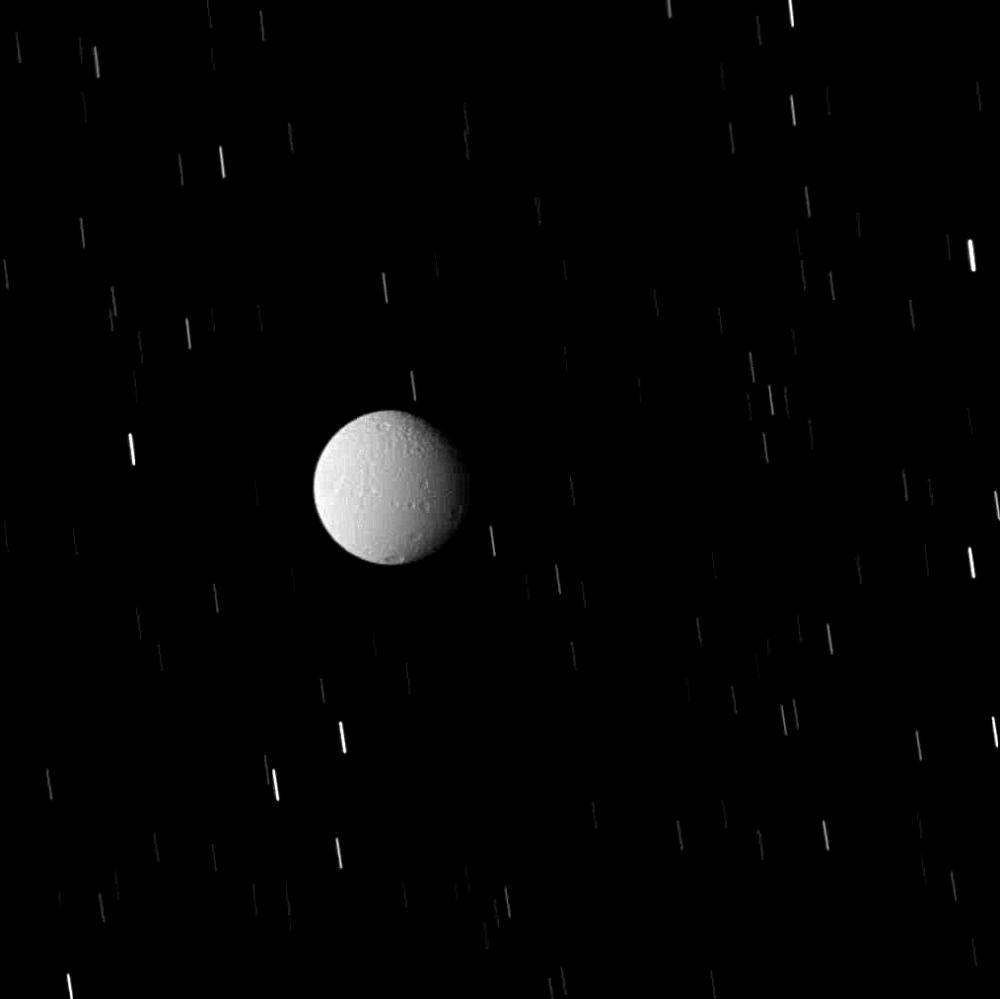
Don't change the subject!!!
YOU asked for an image of stars taken in space without passing through the atmosphere in visible light, you said it can't be done.
Here it is so discuss the image!!!

Don't change the subject!!!
edit on 19-2-2016 by wmd_2008 because: (no reason given)
originally posted by: GaryN
a reply to: wmd_2008
If our own Sun, a star, can not be seen from cislunar space, then obviously no other stars can be seen, and the fact that the only people who have been in cislunar space to tell us what the Sun looks like from there say nothing about the Sun at all, took no pictures of it at all. Find me any discussion of the Suns appearance from cislunar space and I'll join the discussion again
Googling "Sun from cislunar space + Apollo" gives plenty of results. Here's some from this thread: (emphasis mine)
Neil Armstrong talks to Patrick Moore on The Sky At Night, BBC 1970 (UTube):
PM Mr Armstrong I do realize that when you were on the surface of the Moon you had very little time for gazing upwards but could you tell us something about what the sky actually looks like from the Moon – the Sun, the Earth and the stars if any and so on?
NA The sky is deep black when viewed from the Moon as it is when viewed from cisluna space, the space between the Earth and the Moon. The Earth is the only visible object other than the Sun that can be seen although there have been some reports of seeing planets I myself did not see planets from the surface but I suspect they might be visible.
Apollo 14 astronaut Dr Edgar Mitchell is quoted in an interview by Sarah E Truman, Ascent Magazine editor, first Canadian Yoga magazine, copyright 2007 (ref Google) as follows:
SET In 1971, as you pulled away from the Moon and made your way back to Earth, what did it feel like to be in the space between worlds?
EM I’ll have to set up the story for you just a little bit. The spacecraft was oriented perpendicular to the plane that contains the Earth, the Moon and the Sun. Not flying perpendicular to that plane – but moving through it back to Earth. The spacecraft was rotating to maintain the thermal balance of the Sun. What that caused to happen was that every two minutes, with every rotation, we saw the Earth, the Moon and the Sun as they passed by the window. The 360-degree panorama of the heavens was awesome and the stars are ten times as bright and, therefore, ten times as numerous than you could ever see on a high mountaintop on a clear night. It was overwhelmingly magnificent.
There you go, both the Sun and the stars described as being seen from the cislunar space.
This photo of an EVA undertaken in cislunar space shows the sunlit CSM and the astronaut:
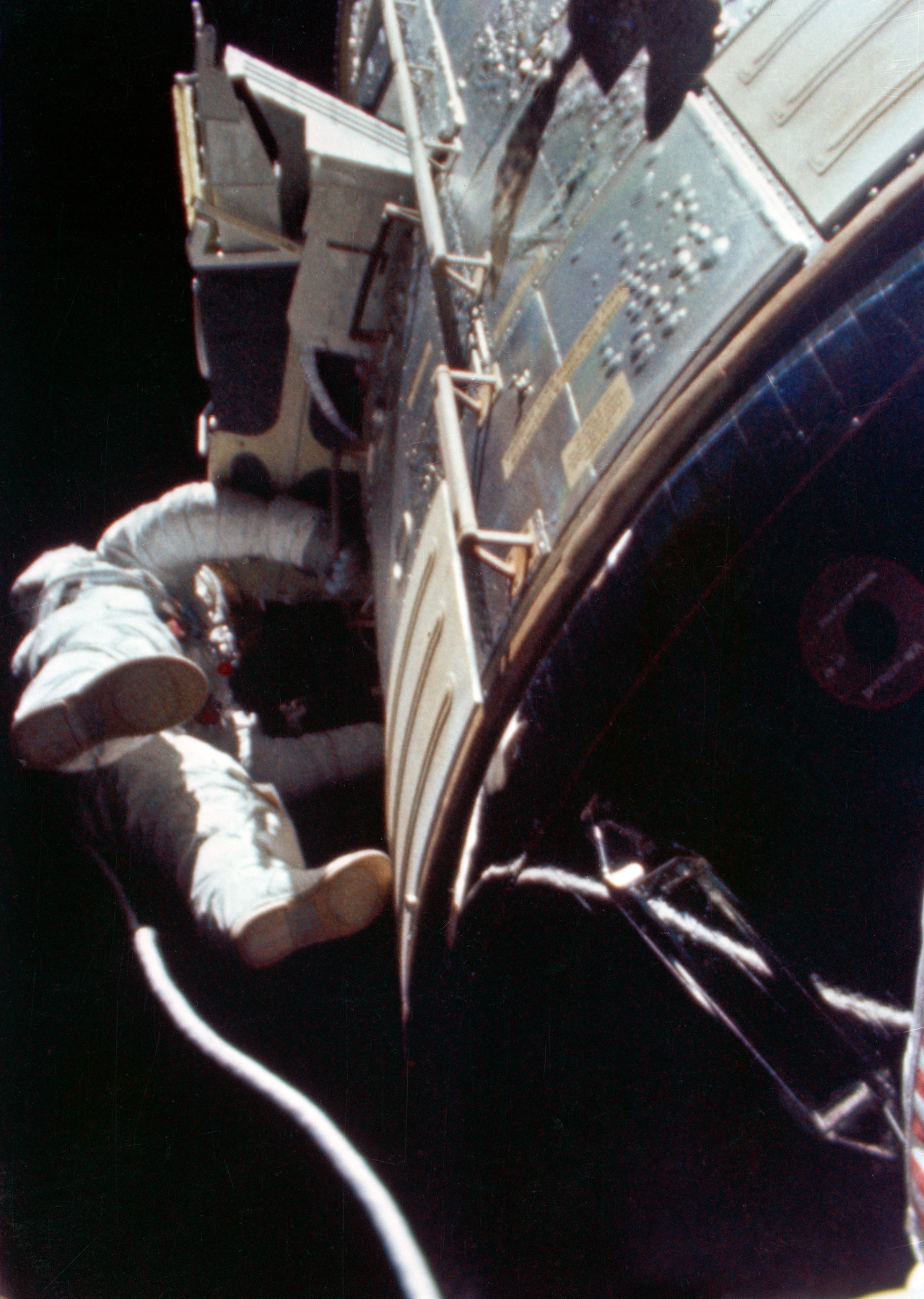
edit on 19-2-2016 by wildespace because: (no reason given)
new topics
-
A Warning to America: 25 Ways the US is Being Destroyed
New World Order: 1 hours ago -
President BIDEN's FBI Raided Donald Trump's Florida Home for OBAMA-NORTH KOREA Documents.
Political Conspiracies: 7 hours ago -
Maestro Benedetto
Literature: 9 hours ago -
Is AI Better Than the Hollywood Elite?
Movies: 9 hours ago
top topics
-
President BIDEN's FBI Raided Donald Trump's Florida Home for OBAMA-NORTH KOREA Documents.
Political Conspiracies: 7 hours ago, 27 flags -
Weinstein's conviction overturned
Mainstream News: 17 hours ago, 8 flags -
Gaza Terrorists Attack US Humanitarian Pier During Construction
Middle East Issues: 13 hours ago, 8 flags -
Massachusetts Drag Queen Leads Young Kids in Free Palestine Chant
Social Issues and Civil Unrest: 15 hours ago, 7 flags -
Las Vegas UFO Spotting Teen Traumatized by Demon Creature in Backyard
Aliens and UFOs: 12 hours ago, 6 flags -
Meadows, Giuliani Among 11 Indicted in Arizona in Latest 2020 Election Subversion Case
Mainstream News: 15 hours ago, 5 flags -
2024 Pigeon Forge Rod Run - On the Strip (Video made for you)
Automotive Discussion: 13 hours ago, 4 flags -
Is AI Better Than the Hollywood Elite?
Movies: 9 hours ago, 3 flags -
A Warning to America: 25 Ways the US is Being Destroyed
New World Order: 1 hours ago, 3 flags -
Maestro Benedetto
Literature: 9 hours ago, 1 flags
active topics
-
Gaza Terrorists Attack US Humanitarian Pier During Construction
Middle East Issues • 31 • : 5thHead -
New whistleblower Jason Sands speaks on Twitter Spaces last night.
Aliens and UFOs • 65 • : Jukiodone -
HORRIBLE !! Russian Soldier Drinking Own Urine To Survive In Battle
World War Three • 50 • : F2d5thCavv2 -
Russia Ukraine Update Thread - part 3
World War Three • 5732 • : F2d5thCavv2 -
The Acronym Game .. Pt.3
General Chit Chat • 7751 • : F2d5thCavv2 -
Salvador Dali's Moustaches
People • 28 • : zosimov -
Is AI Better Than the Hollywood Elite?
Movies • 17 • : ThePsycheaux -
The best Rice dish i've ever tasted... Kimchi Rice
Food and Cooking • 26 • : lamhaocc -
A Warning to America: 25 Ways the US is Being Destroyed
New World Order • 1 • : 727Sky -
Massachusetts Drag Queen Leads Young Kids in Free Palestine Chant
Social Issues and Civil Unrest • 15 • : tarantulabite1
